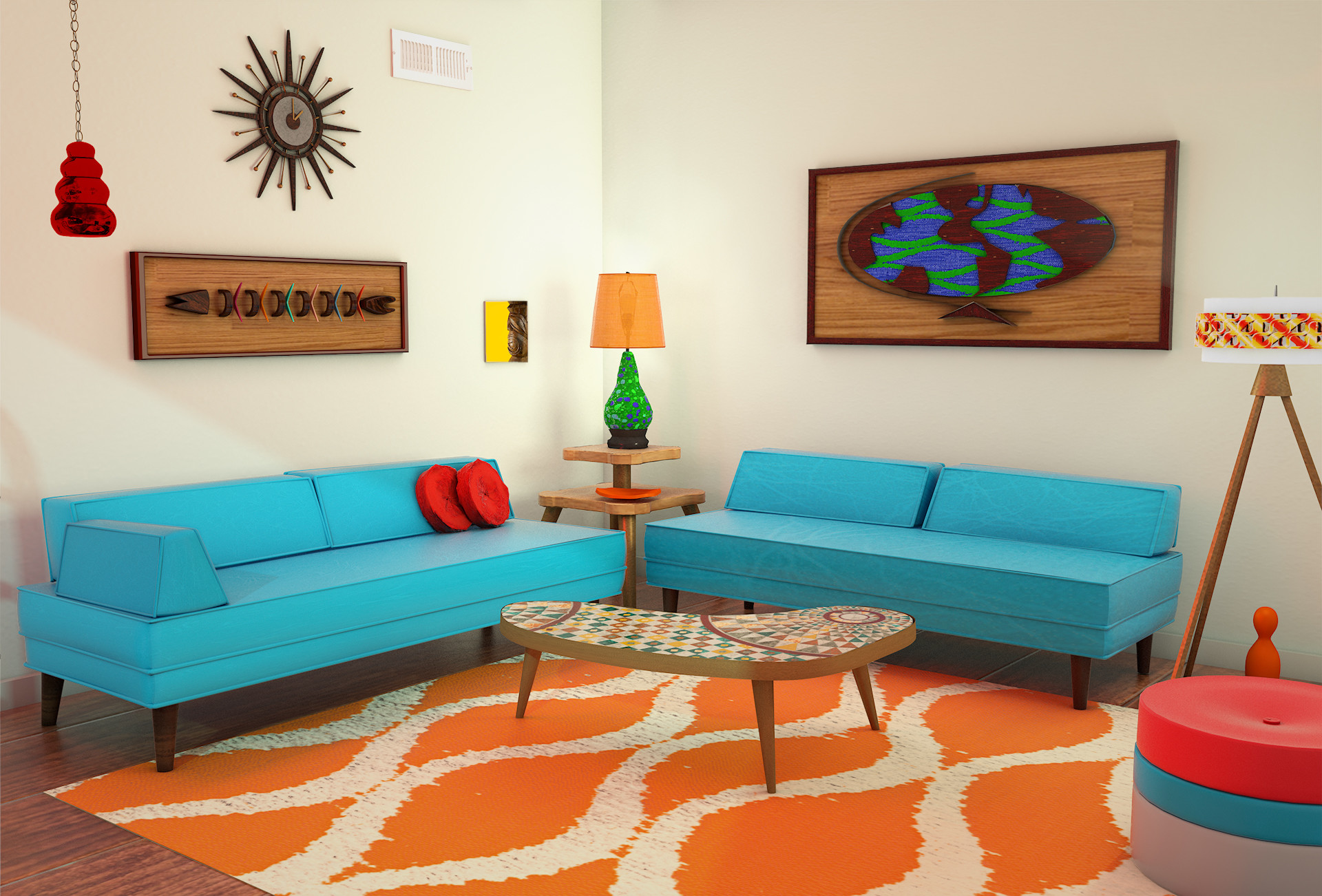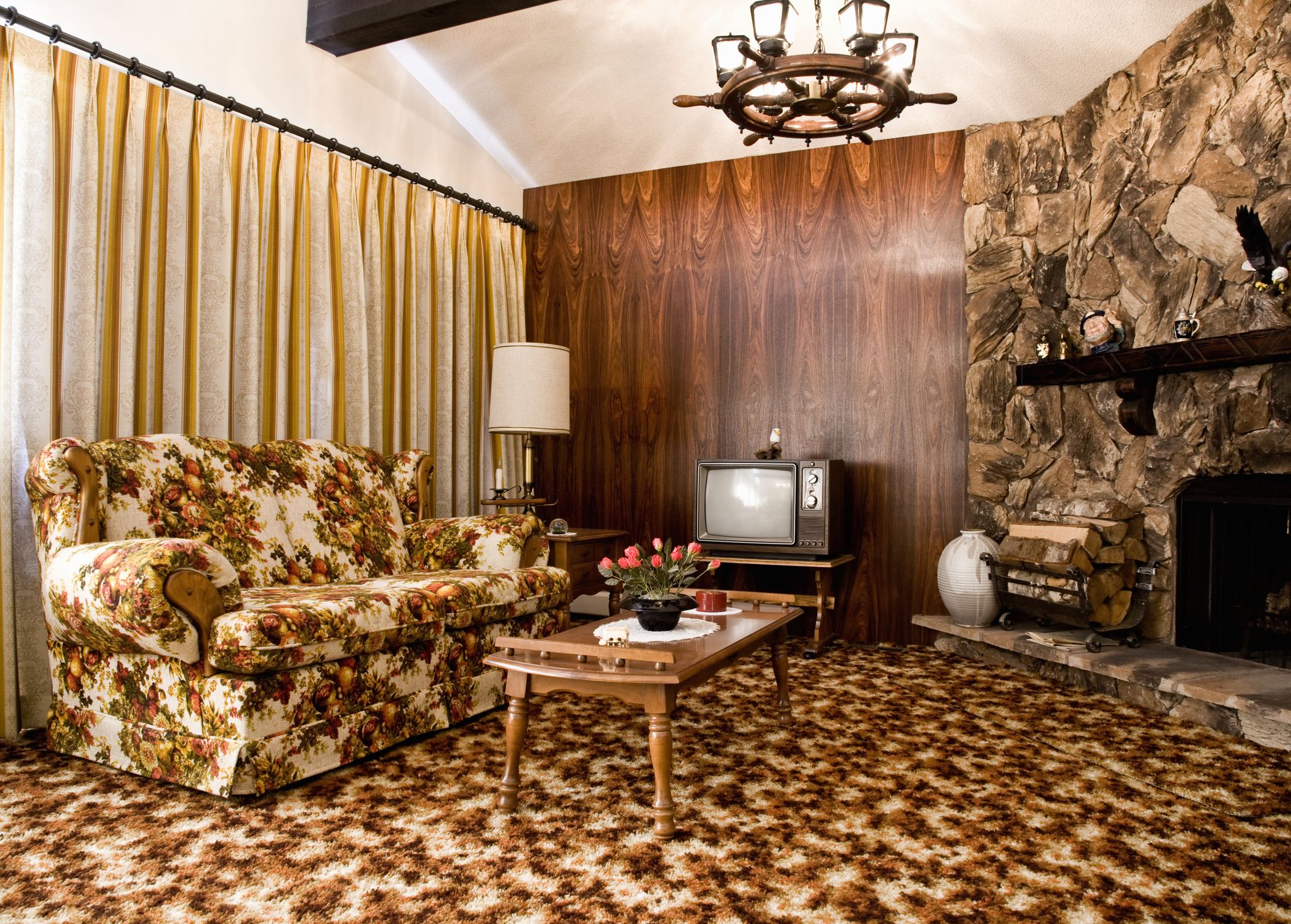70s Living Room Decor Elements

The 1970s was a decade of bold and eclectic style, and this was reflected in the design of living rooms. From shag carpets to macrame wall hangings, there were many unique elements that came together to create the signature look of a 70s living room.
One of the most iconic pieces of furniture from the 70s is the beanbag chair. These large, bean-filled chairs were often covered in brightly colored fabric and were a popular place to relax and watch TV. Another popular seating option was the sectional sofa. These sofas were typically made up of several modular pieces that could be arranged in different configurations to accommodate the needs of the space.
The 70s living room was a haven of bold patterns and vibrant colors, where the walls often served as a canvas for artistic expression. One such trend that gained immense popularity was boxing wallpaper , featuring iconic images of legendary fighters.
These wallpapers transformed living spaces into arenas of nostalgia and athleticism, capturing the spirit of the era’s fascination with the sweet science.
Textiles were also an important part of 70s living room decor. Shag carpets were a popular choice for flooring, and they came in a variety of colors and textures. Curtains and upholstery were often made from heavy fabrics, such as velvet or corduroy, and they were often printed with bold patterns.
The 70s living room, a time capsule of avocado green shag carpets and lava lamps, often embraced bold and eclectic décor. One such trend was the captivating viking wallpaper , with its intricate Nordic motifs and earthy tones. These wallpapers transformed ordinary walls into portals to ancient sagas, adding a touch of grandeur to the vibrant 70s living room.
Accessories were also key to creating the 70s living room look. Macrame wall hangings were a popular way to add a touch of bohemian flair to a space, and they were often paired with other natural elements, such as plants and wood.
Furniture
- Beanbag chairs: Large, bean-filled chairs often covered in brightly colored fabric.
- Sectional sofas: Sofas made up of several modular pieces that could be arranged in different configurations.
- Overstuffed armchairs: Comfortable chairs with large cushions and high backs.
- Rattan furniture: Furniture made from natural materials, such as rattan or wicker.
Textiles
- Shag carpets: Carpets with a long, thick pile.
- Heavy fabrics: Curtains and upholstery made from heavy fabrics, such as velvet or corduroy.
- Bold patterns: Fabrics printed with bold patterns, such as geometric designs or floral prints.
- Natural materials: Textiles made from natural materials, such as cotton or linen.
Accessories, 70s living room
- Macrame wall hangings: Wall hangings made from knotted cords.
- Plants: Natural plants, such as ferns or spider plants.
- Wood accents: Wood accents, such as coffee tables or side tables.
- Lava lamps: Lamps with a moving, colorful liquid inside.
Color Palettes and Patterns in 70s Living Rooms

The 1970s witnessed a vibrant and earthy color palette in living rooms, mirroring the era’s bohemian and free-spirited aesthetic. Hues such as burnt orange, avocado green, mustard yellow, and deep browns dominated the scene, creating warm and inviting spaces. These colors were often combined in bold and unexpected ways, with geometric patterns, florals, and abstract motifs adorning textiles, wallpaper, and decor.
Geometric Patterns
Geometric patterns were ubiquitous in 70s living rooms, reflecting the influence of the Bauhaus and Art Deco movements. Zigzags, stripes, and squares appeared in a variety of sizes and colors, creating a dynamic and visually stimulating environment. These patterns were often used on wallpaper, curtains, and upholstery, adding a touch of sophistication and modernity to the space.
Florals
Florals were another popular pattern in 70s living rooms, bringing a touch of nature indoors. Bold and colorful floral prints adorned fabrics, wallpaper, and even furniture, creating a cheerful and inviting atmosphere. These prints often featured large-scale flowers in bright hues, adding a bohemian and eclectic touch to the space.
Abstract Motifs
Abstract motifs also played a significant role in 70s living room decor. These patterns, often inspired by nature or art, added a touch of whimsy and creativity to the space. Abstract prints could be found on everything from textiles to wallpaper, creating a unique and personalized look.
Layout and Functionality of 70s Living Rooms

In the 70s, living rooms embraced open and airy layouts, characterized by the seamless flow of spaces and the absence of constricting walls or partitions. Furniture arrangements were designed to promote both functionality and visual appeal, with an emphasis on comfort and style. This era witnessed the rise of built-in shelving, fireplaces, and other architectural elements that added both practical and aesthetic value to the space.
Furniture Placement and Open Spaces
Furniture in 70s living rooms was typically arranged to create intimate conversation areas while maintaining an open and spacious feel. Sofas and chairs were often placed facing each other, inviting guests to engage in lively discussions. Large windows and sliding glass doors allowed natural light to flood the room, creating a bright and inviting atmosphere. The absence of walls and partitions fostered a sense of openness and connectivity, allowing for easy movement and interaction between different areas of the living space.
Built-In Features
Built-in features were a hallmark of 70s living rooms, serving both functional and aesthetic purposes. Built-in shelving provided ample storage space for books, records, and decorative items, while also creating a visually appealing focal point. Fireplaces, often adorned with intricate stone or brickwork, added a touch of warmth and ambiance to the space. These built-in elements not only enhanced the functionality of the living room but also contributed to its overall design aesthetic, creating a cohesive and inviting space that seamlessly blended style and functionality.